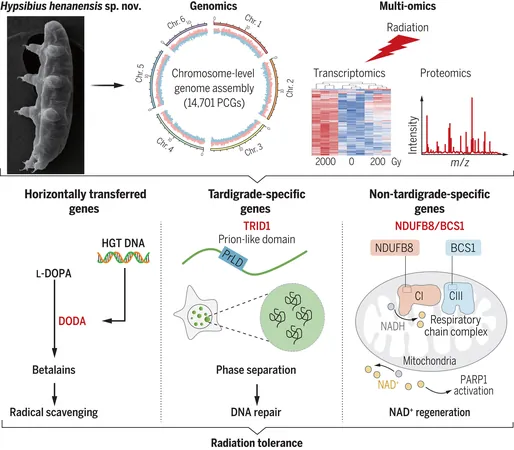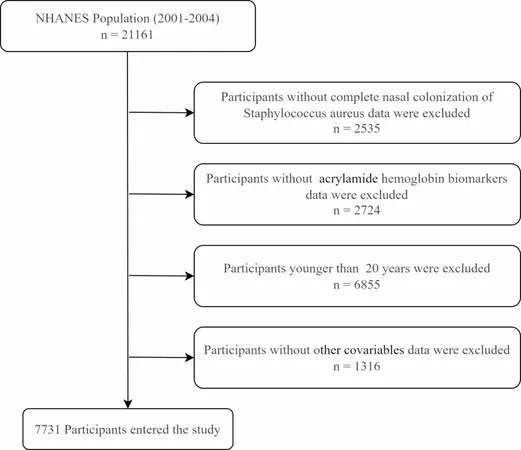
Scientists Uncover Secrets Behind Tardigrade Resilience to Extreme Radiation: A Groundbreaking Study!
2024-10-25
Author: Rajesh
Introduction
A team of biologists from multiple institutions in China has made exciting discoveries about how tardigrades, also known as water bears, manage to endure extreme levels of radiation. Their findings, published in the prestigious journal Science, focus on a newly identified species known as Hypsibius henanensis.
Tardigrades have long fascinated researchers due to their remarkable survival skills in some of the harshest environments on Earth and beyond—remarkably, they have been found thriving on the exterior of the International Space Station! This study aimed to deepen our understanding of the biological mechanisms that allow these tiny creatures to withstand conditions lethal to most forms of life.
Study Background
The research journey began six years ago when scientists discovered Hypsibius henanensis in Henan Province, China. They meticulously sequenced its genome, uncovering 14,701 genes, with an impressive 30% unique to tardigrades. This genomic treasure trove sparked further investigation into how this new species copes with radiation exposure through various experimental setups involving gamma rays at different dosages.
Key Findings
The results are astonishing. A significant finding was that 2,801 of the genes in H. henanensis are devoted to DNA repair—an essential mechanism when confronted with the destructive potential of radiation. Specifically, the researchers pinpointed three pivotal factors that contribute to the organism's resilience.
1. Robust DNA Repair Mechanism
Upon exposure to radiation, H. henanensis exhibits an exceptional ability to repair its DNA damage. The researchers identified a unique tardigrade protein named TRID1 that facilitates this rapid repair process. DNA damage from radiation can lead to serious consequences, including helix breakage and potentially cancerous mutations, making this repair capability critical for survival.
2. Activation of Protective Genes during Radiation Exposure
The study revealed that certain genes are upregulated when exposed to radiation, resulting in the production of proteins vital for the synthesis of ATP in mitochondria. Interestingly, these proteins also play a crucial role in DNA repair, showcasing a dual function that enhances the organism's resilience.
3. Effective Antioxidant Production
H. henanensis demonstrates an impressive strategy for minimizing radiation damage. It generates a multitude of antioxidant proteins, vital for neutralizing harmful free radicals created by radiation exposure. By clearing these reactive species, the tardigrade effectively protects its cellular structures from damage.
Implications of the Research
This research not only unravels the mysteries of tardigrade survival but also holds implications for human applications, especially in the realms of medicine and space exploration. Understanding how these remarkable creatures manage to thrive under extreme conditions could inspire advancements in radiation protection strategies and even inform future endeavors in human space travel.
Conclusion
As the scientific community continues to explore the incredible world of tardigrades, we can only imagine the potential breakthroughs that await us. Keep an eye on this fascinating field—who knows what other secrets these tiny survivors may hold!


 Brasil (PT)
Brasil (PT)
 Canada (EN)
Canada (EN)
 Chile (ES)
Chile (ES)
 España (ES)
España (ES)
 France (FR)
France (FR)
 Hong Kong (EN)
Hong Kong (EN)
 Italia (IT)
Italia (IT)
 日本 (JA)
日本 (JA)
 Magyarország (HU)
Magyarország (HU)
 Norge (NO)
Norge (NO)
 Polska (PL)
Polska (PL)
 Schweiz (DE)
Schweiz (DE)
 Singapore (EN)
Singapore (EN)
 Sverige (SV)
Sverige (SV)
 Suomi (FI)
Suomi (FI)
 Türkiye (TR)
Türkiye (TR)